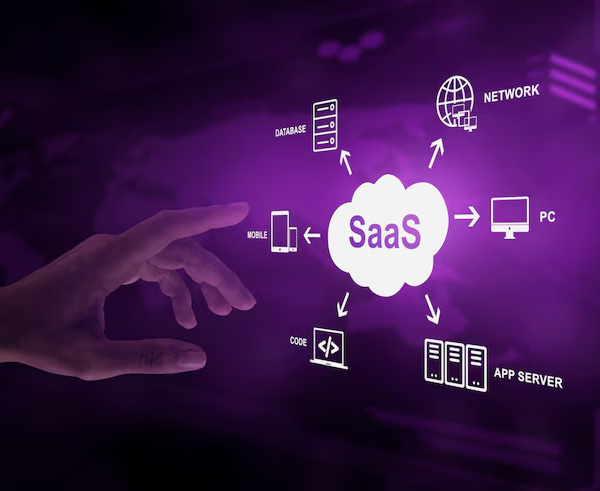By admin
The Founder’s Guide to Building AI-Enabled SaaS Platforms
”From Vision to Scalable Architecture – Everything You Need to Know“
In 2025, AI is no longer a “nice-to-have” for SaaS products. it’s a competitive necessity. Whether you’re building a B2B platform, vertical SaaS product, or internal automation tool, integrating AI from day one can differentiate your product and unlock exponential growth.
But where do you start? As a founder or technical co-founder, the challenge isn’t just understanding AI. it’s building a scalable, AI-enabled SaaS platform that delivers real value and grows with your business.
Start with the Problem, Not the Model
Too many startups begin with: “We want to use AI.”
But the better question is: “Where can AI create value for our users?”
Start by mapping key use cases:
- Can you automate repetitive tasks (e.g., invoice processing)?
- Can you personalize user experiences (e.g., content, recommendations)?
- Can you extract insights from messy data (e.g., reports, emails, documents)?
- Can AI augment user decisions (e.g., fraud detection, pricing optimization)?
Tip: AI should reduce friction or add intelligence in workflows, not just be a buzzword.
Define Your AI Stack Early
An AI-enabled SaaS is a hybrid of software + data + models. Your tech stack must reflect that.
Here’s a sample architecture approach:
- Frontend: React/Vue with dynamic UX for AI-driven interactions.
- Backend: Python/Node/Go with microservices handling model calls.
- AI Layer: Prebuilt models (OpenAI, Google Cloud, AWS AI) for speed and Custom ML models (TensorFlow, PyTorch, Hugging Face) for uniqueness.
- Data Engineering: ETL pipelines, data cleaning tools (e.g., Airbyte, dbt).
- Infra & Orchestration: Kubernetes, Docker, Apache Airflow.
- MLOps: Model versioning, monitoring, retraining pipelines.
Don’t reinvent the wheel leverage open-source + cloud-native tools.

Build Modular and Scalable Architecture
SaaS platforms succeed when they’re agile, scalable, and easy to update.
Modularize your system:
- Separate AI models from the app logic.
- Use APIs for communication between modules.
- Isolate data pipelines for retraining without interrupting the product.
This allows you to:
- Swap out models as you improve.
- Scale individual components based on usage (e.g., inference-heavy APIs).
- Experiment fast without breaking production.
Think API-first architecture with plug-and-play intelligence modules.
Don’t Skip Data Strategy
Your AI is only as good as your data pipeline. For SaaS founders, this means:
- Designing data capture into your product from day one.
- Setting up structured storage (e.g., PostgreSQL, Snowflake).
- Implementing labeling and feedback loops.
- Planning for data privacy (GDPR, SOC 2, HIPAA).
Bonus: SaaS data = business gold. Even beyond AI, structured data creates opportunities for dashboards, insights, upsells, and customer retention.


AI + SaaS = Continuous Learning
Unlike traditional SaaS, AI-enabled products improve over time. But only if you design them to:
- Retrain on new data (build automated retraining pipelines).
- Measure model drift and performance degradation.
- Incorporate user feedback into your learning loop.
Turn every interaction into data that sharpens your product’s intelligence.
Hire or Partner Wisely
Founders often struggle with early technical hiring especially for AI.
Your options:
- Build in-house: Great for long-term, if you have AI talent.
- Partner with specialists: Faster go-to-market and access to deep expertise.
- Hybrid: Start with a tech partner, build a core team as you scale.
If you don’t have an AI expert on your founding team, work with a technical partner who understands AI architecture, data infrastructure, and SaaS scale.
Real-World Example: How a FinTech SaaS Used AI for Underwriting
A European fintech startup needed an automated underwriting engine for small business loans. They built a modular SaaS platform with:
- Data pipelines pulling bank data and financial docs.
- An AI model scoring risk using trained credit signals.
- A dashboard for analysts to override or approve.
Results:
- 70% reduction in manual reviews.
- Faster loan approvals = more conversions.
- New revenue stream by licensing underwriting module to partners.
The key? Focused use case + tight integration + scalable architecture.
Summary: Your AI SaaS Blueprint
| Area | What to Focus On |
|---|---|
| Problem | Define AI use cases that truly matter to your users. |
| Stack | Use proven tools. Build modular, API-first architecture. |
| Data | Design for data collection, security, and retraining. |
| Product | Enable continuous learning and smart UX. |
| Team | Hire or partner smart. Expertise early saves cost later. |
Final Thought
AI won’t make a bad product better. But it will make great products exponential.
If you’re building a SaaS platform, now is the moment to design it AI-first not as a feature, but as a core driver of differentiation, scalability, and long-term success.
Whether you’re validating an idea, scaling a beta, or rearchitecting for growth. we help startup founders and product leaders build AI SaaS products that scale with confidence.
Want to explore what AI can do for your SaaS? Let’s talk.
